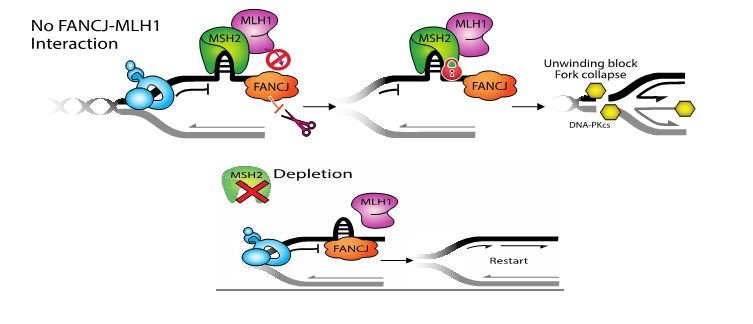Defining why PARP1 activation requires the FANCJ helicase to kick off proteins engaging in mismatch repair
Figure 3 Legend: FANCJ binds directly to the mismatch repair (MMR) protein, MLH1 and this interaction really matters for DNA replication. So far, our data indicate that the interaction helps peel the upstream MSH2-complexes off of DNA and this allows replication to go again. As evidence, we find depletion of MSH2 restores replication restart to cells lacking the FANCJ-MLH1 interaction. Does MSH2 physically blocks replication, or does it block a replication factor? We hope to find out! Could colon cancer due to MMR mutations have replisome changes that provide new opportunities for targeting.
FANCJ null cells display relatively normal DNA replication, but the level of gaps and S-phase PARP1 activity (PARylation) is far below FANCJ proficient cells (Cong et al., Molecular Cell 2021). By re-evaluating the distinct replisome associated changes that develop in FANCJ null cells (Peng et al., Cell Reports 2018), we have developed a hypothesis as to why gaps are absent and why PARP1 is not properly activated. Are findings suggest that gaps and PARP1 activation requires FANCJ to displace mismatch repair (MMR) proteins that interfere with lagging strand synthesis. Now we seek to know how MMR disrupts lagging strand synthesis. This research could provide novel insight into how MMR protects the genome and how to target cancer with loss of MMR as in hereditary colon cancer.

